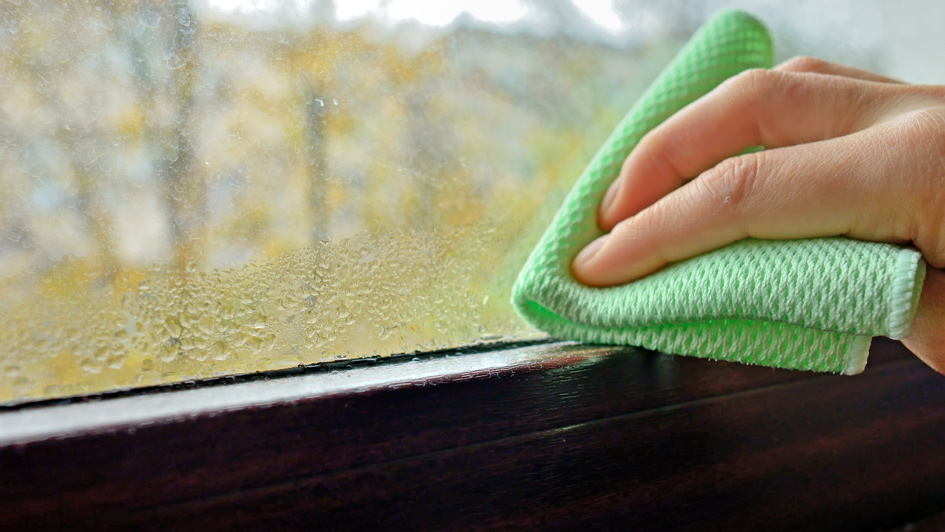
The windows in your home are a portal to the outdoors, a way to draw light in when you appreciate the view of your garden, yard or landscape. The last thing you want to see is a sweaty window covered in a coating of condensation.
Not only are windows coated in condensation unattractive, they also can be evidence of a larger air-quality problem throughout your home. Thankfully, there’s multiple things you can try to correct the problem.
What Creates Condensation along Windows
Condensation on the inner layer of windows is produced by the humid warm air in your home mixing with the colder surface of your windows. It’s notably commonplace around the winter when it’s much cooler outside than it is in your home.
Inside Moisture vs. In Between Panes
When dealing with condensation, it’s important to understand the difference between moisture on the inside of your windows in comparison to moisture in between the windowpanes. One is an indoor air quality issue and the other is a window issue.
- Moisture within a window is caused from the warm moist air inside your home collecting on the glass.
- The moisture you notice between windowpanes is formed when the window seal fails and moisture seeps between the two panes of glass, and by then the window needs to be repaired or replaced.
- Condensation on the inside of the windows isn’t a window issue and can instead be resolved by fine-tuning the humidity inside your home. Many things produce humidity inside a home, such as showers, cooking, taking a bath or even breathing.
Why Sweating Windows Could Mean an Issue
Though you might think condensation inside your windows is a cosmetic concern, it could also be a sign your home has excess humidity. If that’s the case, water may also be condensing on window frames, cold walls or other surfaces. Even a slim film of water can cause wood surfaces to mildew or rot over time, promoting the growth of mildew or mold.
How to Decrease Humidity in Your Home
The good news is there are various options for eliminating moisture from the air inside your home.
If you have a humidifier active in your home – whether it be a small unit or a whole-house humidifier – lower it further so the humidity inside your home comes down.
If you don’t have a humidifier running and your home’s humidity level is excessive, think about installing a dehumidifier. While humidifiers put moisture into your home so the air doesn’t dry out, a dehumidifier extracts excess moisture out of the air.
Small, portable dehumidifiers can absorb the water from one room. However, those units require clearing water trays and most often service a somewhat limited area. A whole-house dehumidifier will extract moisture throughout your entire home.
Whole-house dehumidifier systems are controlled by a humidistat, which allows you to specify a humidity level the same like you would pick a temperature on your thermostat. The unit will begin running immediately when the humidity level overtakes the set level. These systems coordinate with your home’s HVAC system, so you will want to contact qualified professionals for whole-house dehumidifier installation Fort Lauderdale.
Additional Ways to Lower Condensation on Windows
- Exhaust fans. Installing exhaust fans near humidity hotspots including the bathroom, laundry room or above the stove can help by extracting the warm, humid air from these areas out of your home before it can elevate the humidity level in your home.
- Ceiling fans. Spinning ceiling fans can also keep air moving inside the home so humid air doesn’t get trapped in one place.
- Opening your window treatments. Throwing open the blinds or drapes can decrease condensation by stopping the humid air from being stuck against the windowpane.
By decreasing humidity in your home and moving air throughout your home, you can take advantage of clear, moisture-free windows even during the winter.



